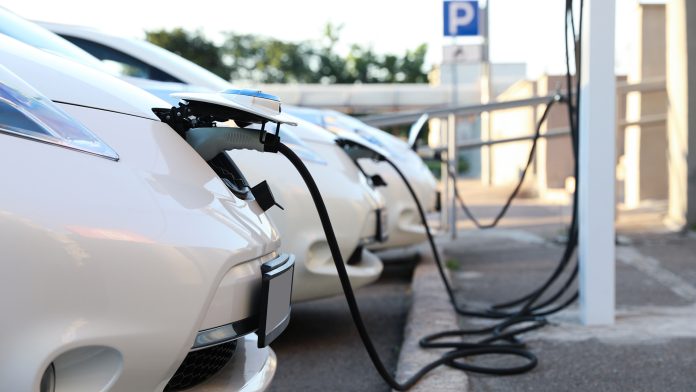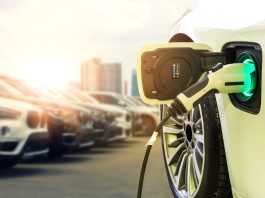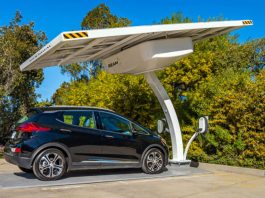Charging At Home discusses the issues facing EV charging infrastructure and supply chains in the UK and the steps that must be taken to overcome them.
If the UK wants to successfully transition from internal combustion engines to electric vehicles, then a comprehensive and reliable charging infrastructure is paramount.
Many people rely on public EV charging as they don’t have access to it at work and may not have off-street parking at home to have a home charger installed.
It’s also vital for those who take long trips up and down the country. Charge points at more frequent locations will make it far more accessible for people to top up their battery and reduce the fear of range anxiety.
Below are five challenges facing the UK charging infrastructure.
1. The number of charge points themselves
This may not be a surprise, but the lack of charging points is becoming more of an issue as more EVs hit the roads. According to ZapMap’s latest figures, there were 57,290 electric vehicle charging points across the UK in February 2024 across 32,575 charging locations.
It seems like a lot, but when you compare it to the figures for EVs, there are now over a million fully electric vehicles on UK roads and 620,000 plug-in hybrids. So you can see there is a long way to go to ensure plenty of charging points across the country.
The UK government predicted in its Electric Vehicle Infrastructure Strategy report that the country will roughly need about 300,000 charge points by 2030. This is a long way from being achieved at the current rate.
2. Getting the correct balance
The government does not want to invest too much in the infrastructure if it’s not going to get used. They expect a lot of people to be able to be charging at home and some at work.
The main reason for a public charging network is to allow those who can’t charge at home to do so and for people on long journeys to be able to stop and top up. However, it’s unknown how many rapid charge points and on-street units are required because we don’t know where and when people like to charge.
Do they prefer to charge when at a meal or shopping for the day, or are rapid chargers best suited for motorway services for those making long journeys and wanting to get the maximum charge possible in a short time?
3. Planning obstacles
Unfortunately, it’s not as simple as installing some charging points in shopping centres, petrol stations and motorway services. Installers often have to get permission from various bodies and councils for schemes.
Not only does this delay proceedings sometimes for months, but it also involves costs and can stop a charging point from being installed at all.
There needs to be open communication with local councils and governments, stating that this isn’t optional. It needs to be backed and pushed in the same way that fibre and broadband were when installed nationwide.
4. Picking locations
This is a headache for everyone as you must consider the different densely populated areas. Somewhere, like London, it is going to need more charge points than a smaller city.
The government statistics show that there are 80 public charge points for every 100,00 people in the capital, whilst in Yorkshire, there are only 20. This means fewer people with limited access to the charging infrastructure are likely to invest in EVs.
Whether at a personal level or even company level, certain regions of the country are behind others, which is why you will see fewer electric cars in those parts.
Below is a table highlighting the different areas and their access to public charging points per 100,000 people.
| Area | Public charging devices per 100,000 of population | Public rapid charging devices per 100,000 of population |
| United Kingdom | 34 | 6.4 |
| Great Britain | 35 | 6.5 |
| England | 34 | 6.3 |
| North-east | 32 | 6.9 |
| North-west | 21 | 4.7 |
| Yorkshire and the Humber | 20 | 6 |
| East Midlands | 24 | 6.2 |
| West Midlands | 22 | 6.5 |
| East of England | 22 | 5.4 |
| London | 80 | 6.5 |
| South-east | 33 | 7.7 |
| South-west | 29 | 6.4 |
| Wales | 27 | 3.6 |
| Scotland | 43 | 11 |
| Northern Ireland | 17 | 1.1 |
Source: Department for Transport
5. Ease of use
Reliability and ease of use are certainly a common problem among EV owners. Not only if you are unsure how the whole process works, but you often have to download multiple apps or smartcards to use different networks.
There have also been numerous cases of drivers being unaware of whether the charge points work before arriving at one. This can be a complete waste of time and charge if driving to a point only to find out that it’s not working or you don’t have access to that specific network.
Drivers need access to real-time live data about the charge point near them, allowing them to compare prices and check whether it’s reliable.
Supply chain issues for Evs
Likewise to charging infrastructure, EV supply chains are vital for transitioning to sustainable transportation, enabling the sourcing, manufacturing, and distribution of key components.
Streamlining these chains accelerates EV adoption, combating climate change, reducing fossil fuel dependence, and creating a cleaner future. However, supply chain issues persist in the UK.
1. Raw materials sourcing and pricing
The biggest problem is the constant supply and demand of lithium, which is used in EV batteries. Finding it and sourcing it are some of the reasons why there have been delays in certain countries transitioning quicker than others.
However, we are finding lithium reserves easier than ever, and the process of mining the chemical element is being streamlined. In the future, we should be able to find and process it much faster than we are currently. This will help prevent delays.
2. Interest rates
EVs have always been more expensive than petrol and diesel cars, and the increase in interest rates makes electric cars less affordable and less appealing to regular drivers and businesses. This, in turn, reduces the overall growth of the EV market.
Until the interest rates come down, consumers may opt for an internal combustion engine for the next few years and then re-evaluate whether they want to invest in an EV.
3. Global logistics
Movement around the world is not always as smooth sailing as you’d hope, and bottlenecks do occur, whether that be port congestion or shipping delays. These then have a knock-on effect on the delivery and installation date of those charge points.
Cargo ships using major shipping lanes are the most common method of transportation when it comes to parts for EVs, so when any of those are affected, it can add hours and sometimes days to the journey of that delivery.
Hopefully, this guide helped explain the various challenges the EV industry faces regarding public charging infrastructure and supply chain issues.
However, there are always steps that can be taken to improve the situation, and with the correct investment in the right places, the UK can hopefully continue to make strides in the EV industry and, in particular, the charging infrastructure.









